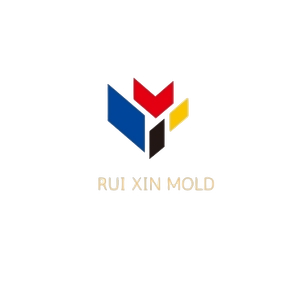Recent Posts
Tags
报错: 未找到这个表单
CNC machining is a cornerstone of modern manufacturing, enabling precision and efficiency in creating complex parts. This beginner’s guide will walk you through the essential aspects of CNC machines, their components, history, and how they work, making it easier to understand this vital technology.

What is CNC Machining?
CNC machining, or Computer Numerical Control machining, is a manufacturing process that uses computerized controls to operate machinery. It is commonly used to automate tools and machines for cutting, drilling, milling, and turning materials into finished parts with high precision.
Key Components of CNC Machines
Controller: Processes G-code and M-code instructions to guide machine movements.
Drive System: Includes servo motors and stepper motors for precise positioning.
Cutting Tools: Tools like drills, mills, and grinders that shape the material.

The History of CNC Machining
CNC technology emerged in the mid-20th century, evolving from punched tape systems to fully computerized controls. The integration of CAD/CAM software in recent decades has further revolutionized CNC machining, making it indispensable in industries such as aerospace, automotive, and medical devices.
Applications of CNC Machining Today
CNC machining plays a critical role in various industries:
Aerospace: Manufacturing intricate components for aircraft.
Automotive: Producing engine parts and chassis components.
Electronics: Creating precise housings and connectors. –Medical Devices: Crafting surgical tools and implants.

Common Types of CNC Machines
CNC Milling Machines
These machines cut materials to precise dimensions using rotary cutters.
CNC Lathes
Ideal for creating cylindrical parts by spinning the material against a cutting tool.
CNC Routers
Used in woodworking, metal, and plastic applications for intricate designs.
CNC Plasma Cutters
Specialized in cutting conductive materials with a high-temperature plasma torch.
Advanced CNC Tools
CNC Grinders: For ultra-precise grinding of surfaces.
CNC Laser Cutters: Utilize lasers for detailed and accurate cutting.
How CNC Machines Work: Positioning and Control Systems
CNC machines operate within the Cartesian coordinate system (X, Y, and Z axes) to control tool movement in 3D space with pinpoint accuracy.
Programming CNC Machines: G-Codes and M-Codes
CNC machines are programmed using two primary types of codes:
G-Codes
Geometric codes that direct movements, such as linear and circular paths.
M-Codes
Miscellaneous codes that control functions like spindle rotation, coolant flow, and tool changes.
Example Code
G01 X10 Y10 Z-5 F100
M03 S500G01: Linear movement to (X10, Y10, Z-5) at a feed rate of 100.
M03: Start spindle at 500 RPM.
who we are
Dongguan Ruixin Mold Co., Ltd. (DGRuixin Mold) is a leading precision manufacturing company specializing in CNC machining, mold making, and metal fabrication. Based in China, we provide high-quality custom solutions to clients across the globe, catering to industries such as automotive, electronics, and consumer goods.
With advanced technology, skilled professionals, and a commitment to excellence, we deliver products like mold components, injection mold inserts, and die-casting mold parts with unparalleled precision. Our one-stop services ensure efficiency, reliability, and cost-effectiveness, making us a trusted partner for customers in the U.S., EU, and beyond.
At DGRuixin Mold, we turn your designs into reality with precision and passion.
Our Products







Additional Resources
See Also
Additive Manufacturing: Complementary to CNC machining.
EDM (Electrical Discharge Machining): Ideal for cutting hard materials.
CAM Software: Generates CNC programs for automation.
References
“Numerical Control.” Wikipedia. Learn more
Industry guides and publications on CNC machining.
Conclusion
CNC machining is a transformative technology that continues to shape modern manufacturing. Understanding its components, history, and applications provides valuable insight into its pivotal role in creating the products we use daily.
